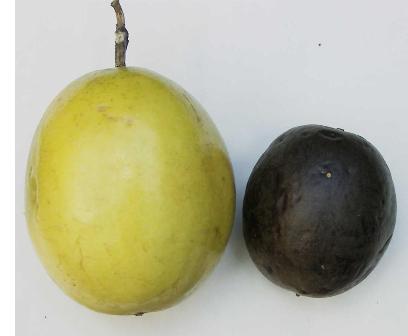Passion Fruit

Ah, how sweet it is. Passion fruit is good as a simple fruit on its own or as a juice. It is often used to scent other juices to enhance the experience of drinking them. Did you it comes in two colors?
The purple fruit is sweeter and the yellow fruit is more acidic. You’re apt to eat the purple fruit raw, seeds and all and savor the yellow variety for juices and a variety of other recipes.
Don’t let me stop you at juice. How about jelly or be the first to bring a passion fruit pie to the next family gathering. Wow them with a special new cake frosting. It is easily boiled down to create a syrup to use as a base for sauces, gelatin desserts and other confections. Introduce it at your next smoothie party or add to a yogurt for a healthy snack.
Vitamins, Minerals and Phytochemical Components
A fruit rich in vitamins, minerals and fiber; it includes: calcium, magnesium, phosphorus, potassium, sodium and sulfur and vitamins A, B, and C. It excels at improving your intake of ascorbic acid (vitamin C) and carotenoids (vitamin A).
There are indications that the purple fruit has traces of cyanogenic glycosides. However they are precariously located in the skin, and are somewhat poisonous. Fortunately the skin is inedible in its thick hard state; and when boiled (to make jam perhaps), it results in the high temperatures destroying the cyanide molecules.
Medicinal Uses Based on Scientific Studies
Coming Soon
Passion Fruit Nutrition Table
Return from Passion Fruit to Exotic Fruit List



